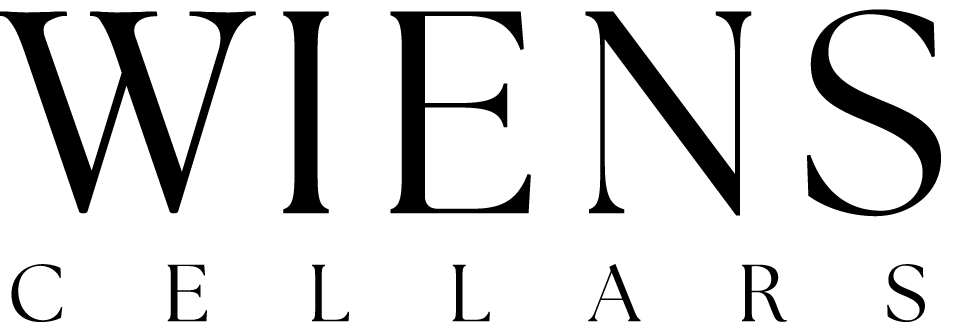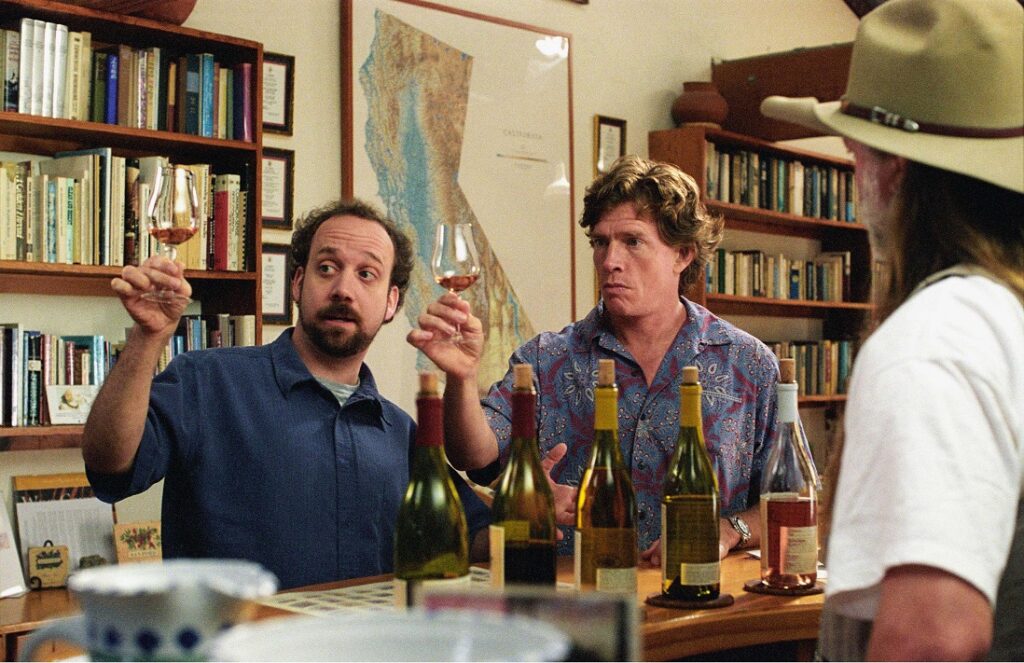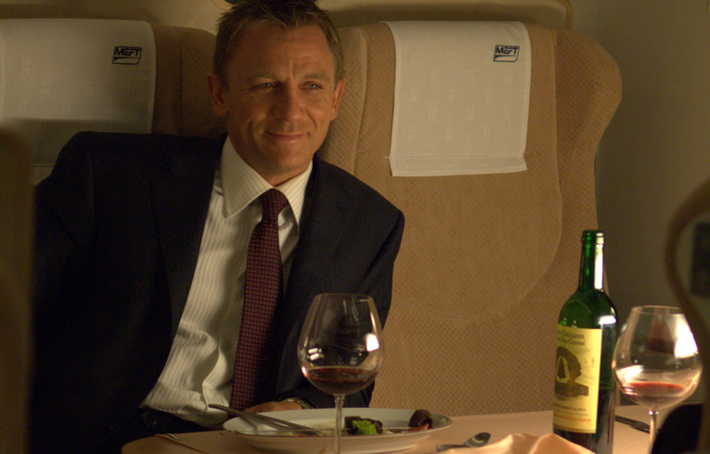The fascinating interplay between pop culture and wine unveils a tapestry where entertainment shapes consumer tastes and market dynamics in profound ways. By delving into the role of films, TV shows, and celebrity influences, we reveal the significant impact that pop culture has on the wine industry, transforming regional wines into icons and driving trends that resonate globally. This exploration aims to dissect how these cultural forces influence wine preferences and elevate regional wines to stardom.
Iconic Films and Their Impact on Wine Regions
The influence of cinema on wine is both profound and far-reaching. Consider:
- “Sideways“: This film not only spotlighted California’s wine country but also significantly shifted public taste towards Pinot Noir, underscoring the potent influence of film on wine preference. The surge in popularity for Pinot Noir following the film’s release demonstrates cinema’s power to affect consumer behavior and wine sales.
- James Bond Franchise: Known for its luxury and high stakes, the James Bond series has glamorized Champagne, associating it with sophistication and celebration, thereby boosting its consumption worldwide. The franchise’s long-standing preference for Champagne has made it synonymous with exclusivity and luxury, significantly impacting the champagne market.
TV Shows That Highlight Wine
Television’s influence on wine culture extends from scripted dramas to reality TV, each shaping consumer perceptions and preferences:
- “Game of Thrones”: The show’s medieval themes and noble settings have spurred interest in robust, old-world wines, mirroring the show’s atmospheric elements. This effect shows how thematic elements in television can parallel trends in wine consumption.
- Reality TV: From “The Bachelor” to “Top Chef,” reality shows often incorporate wine into their narratives, enhancing brand visibility and boosting regional popularity. These shows have the power to make certain wine styles and regions part of everyday conversation, increasing consumer interest and demand.
Celebrity Wine Ventures and Their Regional Impacts
The entry of celebrities into the wine industry often brings significant attention and economic benefits to lesser-known wine regions:
- Celebrity-owned vineyards: Stars like Francis Ford Coppola and Drew Barrymore owning vineyards not only invest financially but also bring a spotlight to these areas, boosting tourism and elevating the region’s profile in the global wine market.
- Celebrity endorsements: When celebrities endorse wines or release their own labels, they leverage their substantial influence to boost awareness and sales, often introducing fans and followers to new wine experiences linked to specific regions.
Social Media and Wine Regions
In the digital age, social media platforms such as Instagram have become pivotal in shaping modern wine culture:
- Influencers on Instagram: These digital personalities can quickly catapult obscure wines and regions into the spotlight, influencing both market trends and consumer preferences with simple posts or stories.
- Viral marketing campaigns: Successful campaigns can significantly increase visibility and interest in lesser-known regions, as seen with regions like Oregon’s Willamette Valley, which have capitalized on social media’s reach to draw tourists and wine enthusiasts.
Wine in Music and Literature
Cultural references to wine in music and books subtly influence consumer preferences and enhance the allure of certain wines and regions:
- Music references: Lyrics that mention specific types of wine or wine-drinking experiences can resonate with listeners, embedding these beverages within the cultural fabric.
- Literature: Novels and memoirs that describe wine-tasting experiences or vineyard settings often contribute to the mystique and romanticism associated with wine, prompting readers to explore and appreciate wines mentioned in their favorite books.
Festivals and Public Events
Wine festivals and public tasting events play a crucial role in popularizing regional wines and educating the public:
- Wine festivals: These gatherings not only celebrate local produce but also serve as important venues for winemakers to showcase their products, attracting wine enthusiasts from around the world.
- Pop culture-themed wine events: Integrating themes from popular movies, shows, or books can attract a broader audience to wine festivals, introducing new demographics to the joys of wine tasting and collecting.
Challenges and Criticisms
While the fusion of pop culture and wine marketing has many benefits, it also presents challenges:
- Risk of commercialization: There is a fine line between using pop culture to enhance brand visibility and oversaturating the market, which can detract from the authenticity and unique qualities of traditional wine-making.
- Maintaining tradition: Balancing commercial success with the preservation of traditional practices and the unique character of wine regions is an ongoing challenge for the industry.
Future Trends
As pop culture continues to evolve, its influence on wine regions is likely to grow, leading to innovative marketing strategies and new forms of engagement. We can expect to see more collaborations between winemakers and pop culture figures, blending entertainment with enology in creative ways that appeal to a broad audience.
Pop culture plays a significant role in promoting wine regions, making them accessible and appealing to a global audience. As we continue to explore this influence, the wine industry is presented with unique opportunities to engage with diverse audiences, ensuring the vibrancy and relevance of wine culture in contemporary society. This exploration encourages readers to view wine through the lens of their favorite cultural phenomena, enriching their understanding and enjoyment of wine.


